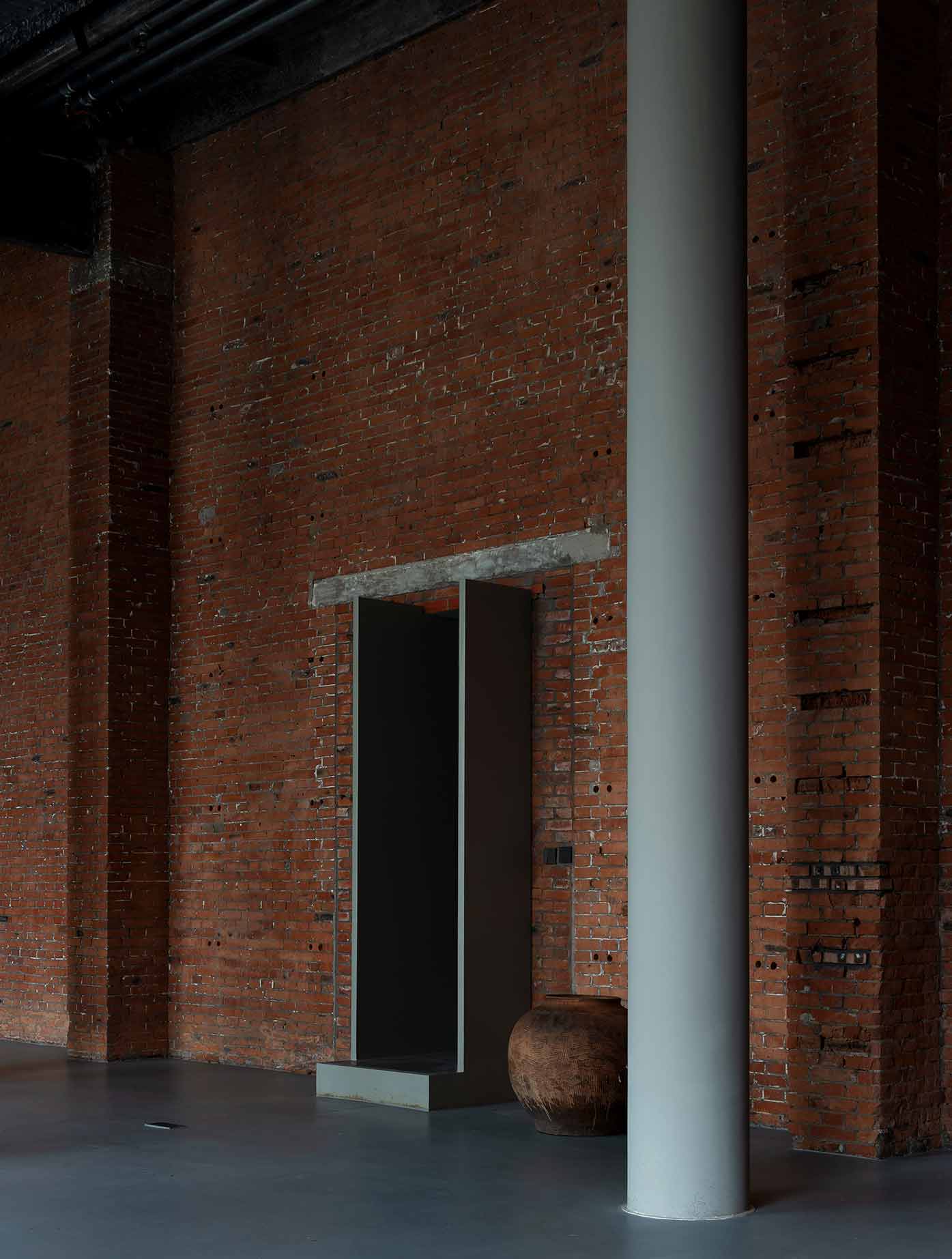
The “Shui Zui Zhong Guo” space is situated in Beijing Baiziwan. As a cultural and artistic media brand dedicated to the exploration of “Chinese culture and contemporary expression,” this space is akin to a reflection of their endeavors in the material world. The original 1000-square-meter space is divided into two parts: 600 square meters used as the office space for the Shui Zui Zhong Guo team, and another 400 square meters dedicated to creating a cultural space known as “Shui Yuan.” If one were to enter through two separate entrances, they might think these two distinct spaces are two enterprises.
These two spaces have independent pathways but are connected through a corridor, resembling the front and backyard of an authentic Chinese courtyard. Shui Yuan serves as the aesthetic space for Shui Zui Zhong Guo. Instead of the typical all-white tone seen in art galleries, it returns the space to its most primitive state by stripping the original wall plaster. Within the 6 meters high space, only a few rounded gray columns are left standing, creating a sense of openness and blankness that forms the material basis of the spiritual nature of the space. The red bricks from over 60 years ago have transformed from a functionalist facade into a new curtain on the stage of the times.
After the completion of Shui Yuan, it has in fact evolved into a venue where culture, art, and design each have a chance to shine, and where the East’s beauty is showcased in turn via furniture, kitchenware, jewelry, flower arrangements, and tea art. The most primitive, sophisticated, and heavenly states in the area have been steadily refined via the partnership of designers and time as the four seasons have unfolded with sunlight, mild rain, pleasant breezes, and falling snow. The so-called “International Wabi-Sabi style” represents a return to one’s inner spirituality rather than only being a fashion trend.
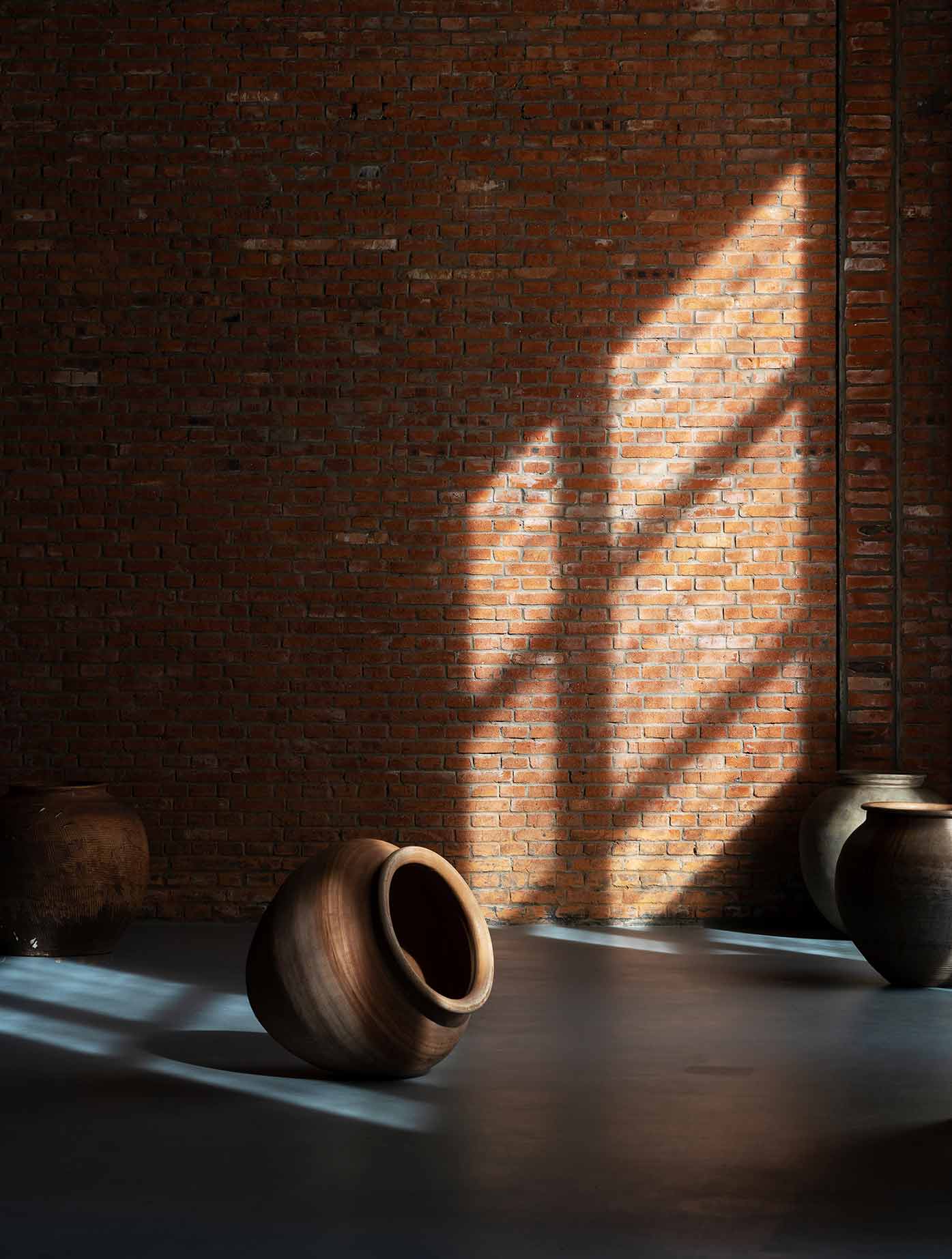
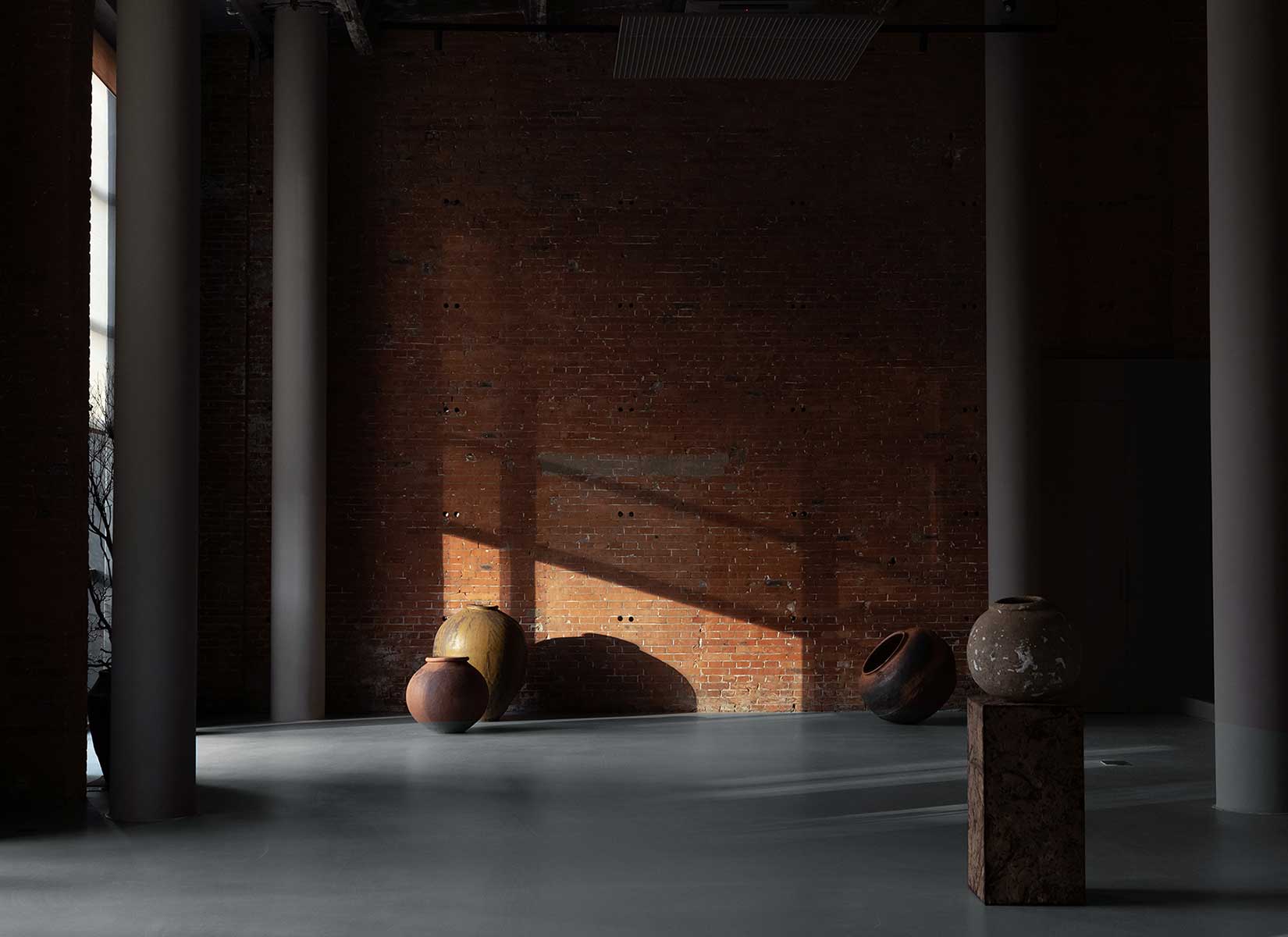
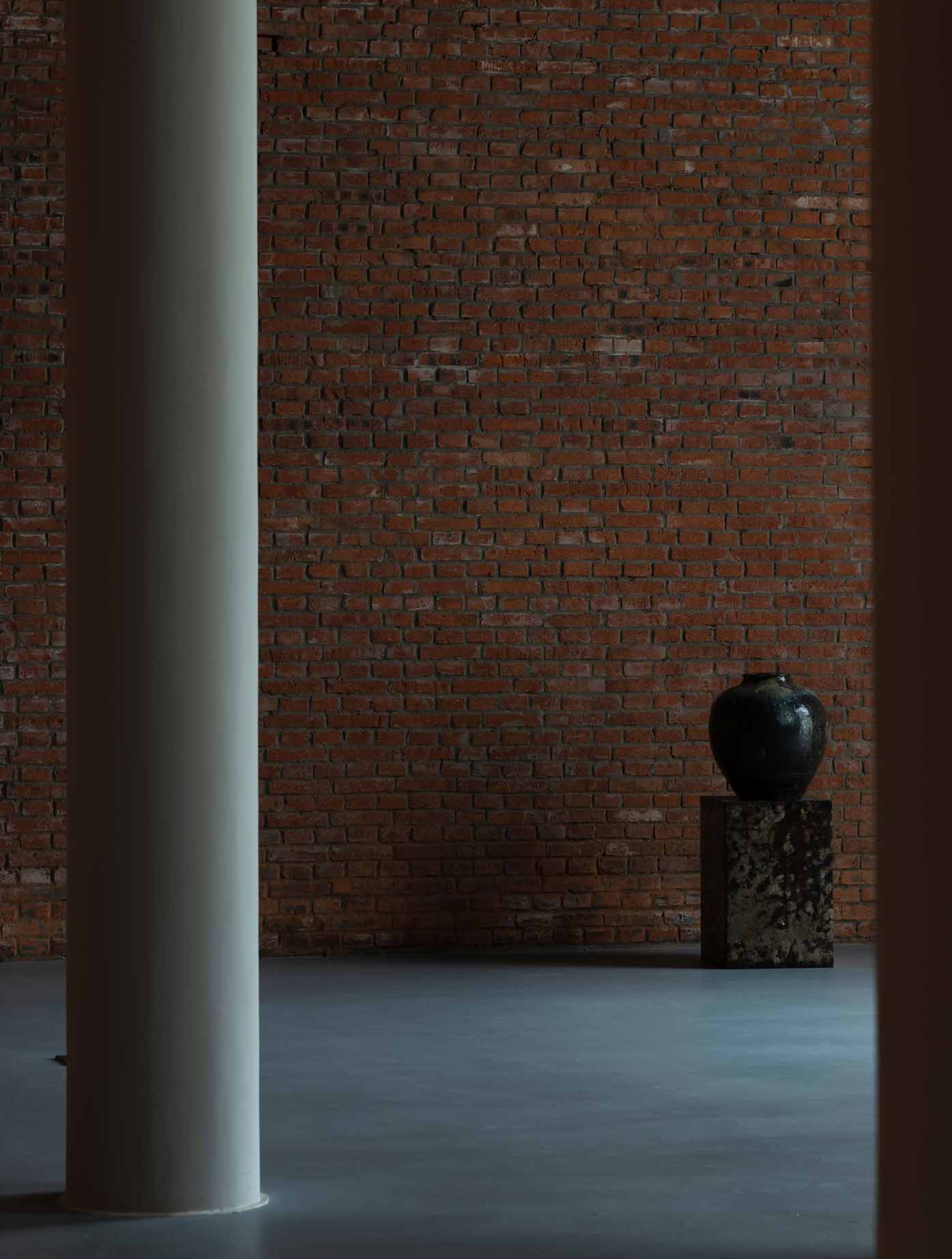

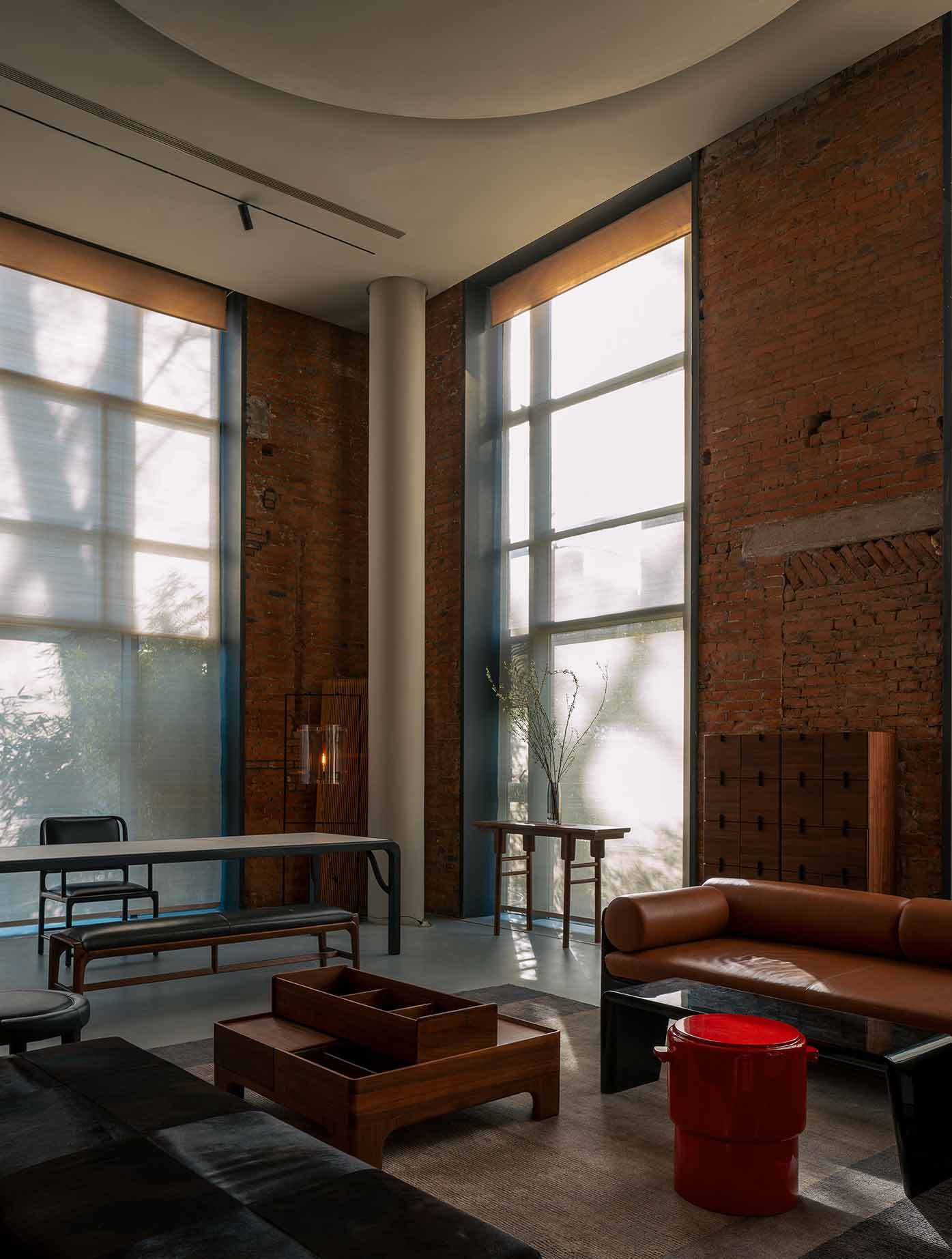
If Shui Yuan reinterprets the Eastern courtyard’s spiritual essence in contemporary manufacturing spaces designed in the Bauhaus style, then in the office portion contemporary design methodologies are applied to more explicitly convey the Eastern aims and create an intriguing intertextual link.
To create a spatial plan resembling a traditional Chinese garden with meandering paths and ever-changing perspectives, the overall design makes use of the interaction between volumes. Under the thoughtfully designed functional zones lie the 12 steel columns that were first abandoned.
The office area enclosed by semi-low walls provides employees with a sense of psychological privacy, preventing visual disturbances from passersby and creating an interesting experience of varying heights within the space. Extensive mirrors and glass partitions, whether real or virtual, in a limited space, generate a sense of infinite spaciousness.
The initial seriousness is broken by the “peek” and “niche” between transmitting and receiving above the entry screen wall. The design’s fun unintentionally disclosed “niche” is ready to be recognized. The switch for altering the ambiance in the workplace area is also by the lighting. The Forbidden City’s orange lights shine on the gray brick floor as office workers leave during the day, giving the area a distinctive Eastern look and shadows.
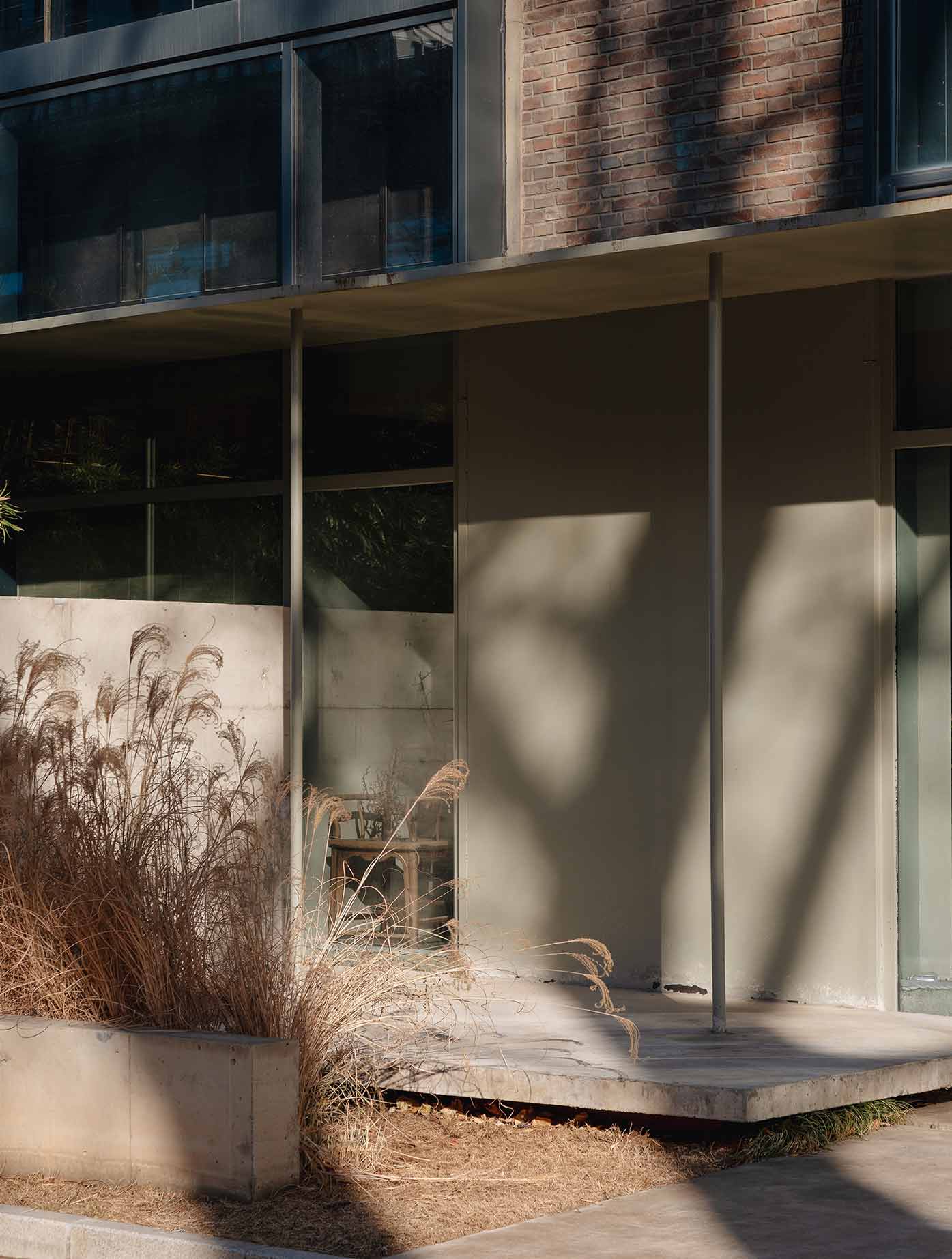


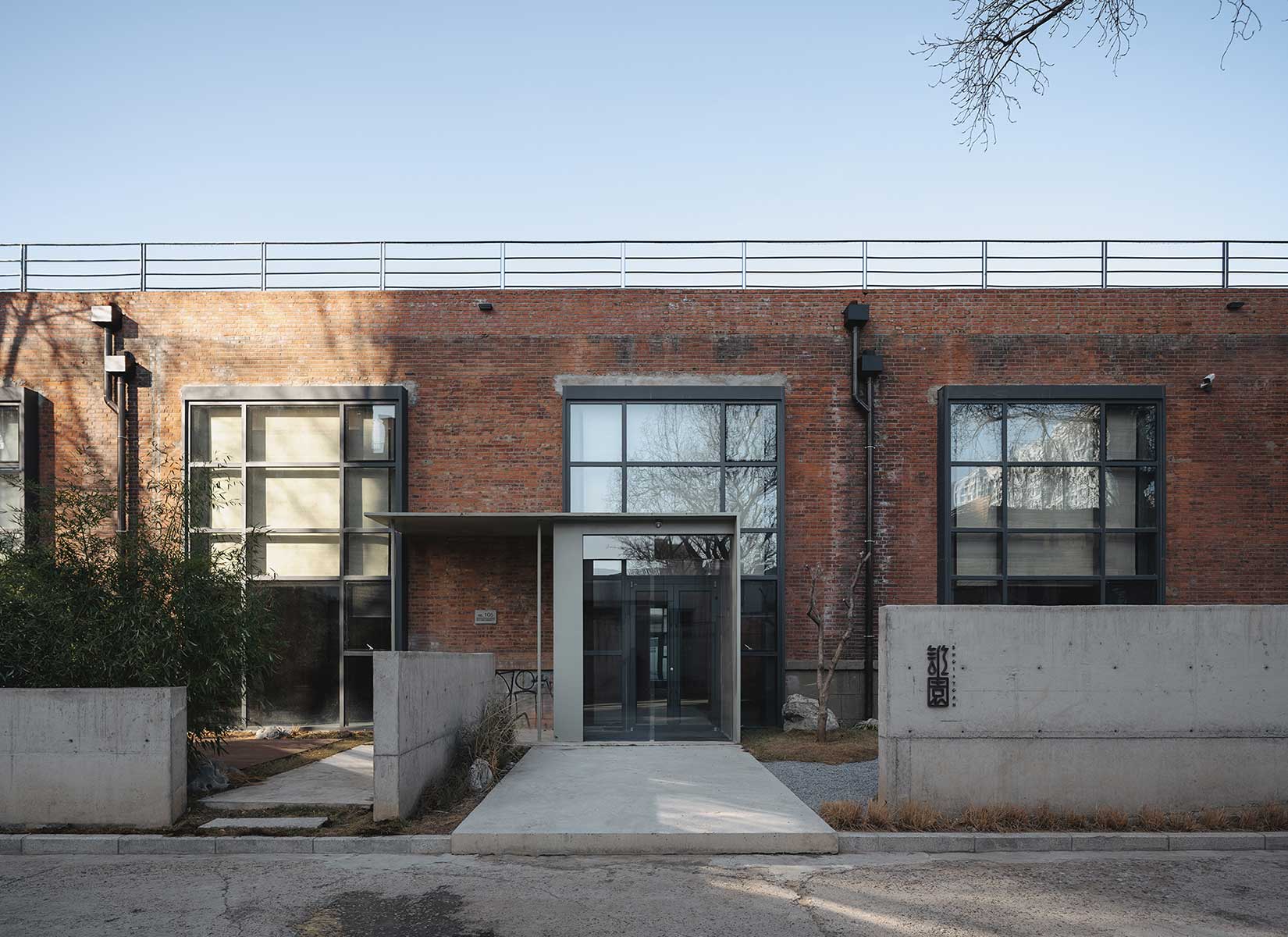
These two locations resemble a pair of back-to-back twin blooms. On one side is Shui Zui Zhong Guo, a media and content developer who has spent a decade researching how Chinese culture is expressed today and the ensuing profound pondering. On the other hand, Shui Zui Zhong Guo wanted to stop being alone, so they built Shui Yuan as a stage and invited numerous artists to perform there and engage with a larger “public.”
“The ultimate goal of design is not architecture or space, but rather the’state’ of people in space and architecture, the unconsciousness of people in space and architecture, and the spiritual pleasure in unconsciousness,” as stated by Haifeng, the host of Shui Zui Zhong Guo.
This is a quest for the truth and one’s authentic self. This chapter is unique and represents the perfect location where “invisible oriental things” instead of “tangible oriental things” exist, and It is not a summation of his years of investigation.
Project information
- Architect:CUN Design
- Location:China,
- Project Year:2022
- Photographer:
- Categories:Bricks,Column,Commercial,Industrial,Office